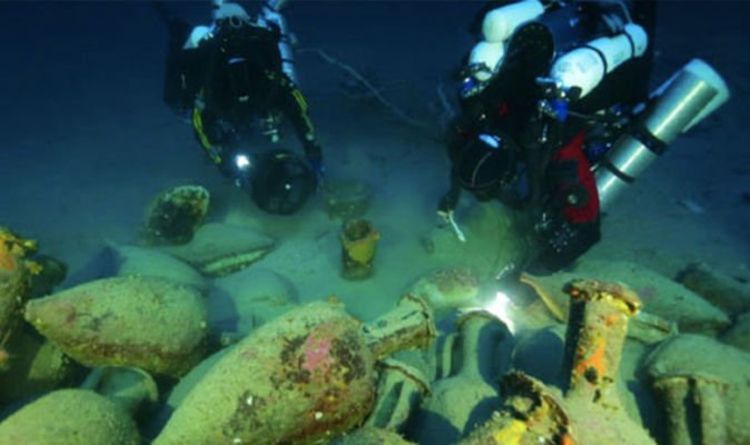Archaeology breakthrough: How 2,000-year-old Roman shipwreck discovery ‘redefined’ history
Scuba researchers explored waters in Florida when they came across the shipwreck of a Roman vessel. The ship was called ‘Panarea III,’ and was expected to have sailed between Rome and Carthage about 218-210 AD during the Second Punic War.
In 2010 US archeologists using sonar equipment and a remotely operated submersible find it at 130 meters depth.
In the center of the researchers, the Italian archeologists considered that the ship was a supply vessel in the fleet of the Roman consul Marcus Claudius Marcellus.
Among the stunning artefacts were “small fishing plates, kalathoi, pitcher, and the louterion,” the archaeologists said.
They said the latter was probably used as a sacrificial altar on board the ship.
Jarrod Jablonski, one of the divers, added: “Metal supports still embedded in the base were likely used for fastening to the deck.

“The Louterion (the ship) is one of many unique discoveries that promise to help redefine what we understand about ancient trade routes and commerce in the 3rd century BC.”
A similar discovery was made in the waters of the Mediterranean when a Phoenician vessel was found by researchers.
The Phoenicians were the direct descendent of the Canaanites of the south Syrian and Lebanese coast – known as a great maritime people who had developed a high level of shipbuilding technology.
It was found at a depth of 125 metres below the surface.
According to Science News, after they find, Dr. Gambin said: “This shipwreck may offer new and significant information about Phoenician seafaring and trade in the central Mediterranean during the archaic period.
“To date, little is known about the earliest contact of Phoenician mariners with the Maltese islands.”
The researchers claimed that the ship was sailing from Sicily to Malta when it sank.
It was about 15 metres long and carried a cargo of 20 grinding stones (about 35 kg each) and 50 amphorae of seven different types – indicating the ship had been indifferent harbours.

Dr. Gambin added: “This discovery may be considered as one of the best-preserved archaeological sites in Malta datable to the early Phoenician period.”





